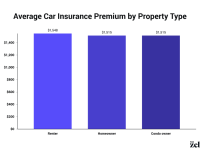Insurance Health – How much does health insurance cost? Across the United States, Americans pay very different monthly health insurance premiums. While these premiums are not determined by gender or pre-existing health conditions thanks to the Affordable Care Act, a number of other factors affect the amount you pay. Below, we explore these factors to help you understand how much you might pay for health insurance and why.
Many factors that affect how much you pay for health insurance are beyond your control. However, it is good to understand what they are. Here are 10 major factors that affect the cost of health insurance premiums.
Contents
- Insurance Health
- Life And Health Insurance
- Things To Keep In Mind While Buying Health Insurance
- Information On Health Insurance
- Importance Of Health Insurance In Life
- Visum Travel Insurance
- Travel Safe With Concordia Foreign Travel Health Insurance
- How To Choose The Best Health Coverage As A Travel Nurse
- Gallery for Insurance Health
- Related posts:
Insurance Health

The coverage your employer offers contributes many of the biggest factors that determine how much your coverage costs and how comprehensive it is. Let’s take a closer look.
Life And Health Insurance
If you’re lucky enough to work for a company that offers health insurance, it could cost you a new car, according to the Kaiser Family Foundation’s 2022 Employer Health Benefits Survey. Kaiser found that the average annual premium for family insurance was $22,463 in 2022.
Workers contributed an average of $6,106 to the annual cost, meaning their employers picked up about 73% of the premium bill. For a single worker in 2022, the average premium was $7,911. Of that amount, workers paid $1,327, meaning employers got about 83 percent.
Kaiser included health maintenance organizations (HMOs), PPOs, defined benefit plans (PPOs), and high-deductible health plans with savings options (HDHP/SO) to arrive at average premium amounts. PPOs were found to be the most popular type of plan, providing 49% of covered employees. HDHP/SOs covered 29% of the insured.
Of course, no matter how much employers spend on health insurance for their workers, less money remains for wages and salaries. So workers actually get a larger share of their insurance premiums than these numbers show. In fact, one reason wages haven’t risen significantly over the past two decades is because health care costs have risen dramatically.
Things To Keep In Mind While Buying Health Insurance
The type of plan plan employees choose affects their premiums, deductibles, choice of health care providers and hospitals, and whether they can get a health savings account (HSA), among many options.
For families where both spouses have employer health insurance, careful comparison is key — one plan may be much better than another. The partner whose plan is not being used can have the portion of his or her wages not withheld for health insurance. Or a childless couple may decide they should choose their company plan as individuals (coverage for couples rarely includes any kind of deductible — it’s basically just doubling the individual rates).
The federal insurance plan available on HealthCare.gov, the Affordable Care Act’s marketplace, enrolled 16.3 million people during the open enrollment period that ended on January 15, 2023 — a record number. Of that number, 3.6 million bought coverage through the marketplace for the first time, while 12.7 million were repeat buyers.

About 18 states and the District of Columbia operate their own health exchanges, which essentially mirror the federal site but focus on plans available to their residents. People in these areas apply through their state, not through the federal exchange.
Information On Health Insurance
Each available plan offers four levels of coverage, each with its own price. In terms of price from highest to lowest, they are classified as platinum, gold, silver, and bronze. The benchmark plan is the second cheapest silver plan available through a health insurance exchange in a given area, and can vary even within the state where you live. It’s called a reference plan because it’s the plan the government uses – along with your income – to determine premium support, if any.
Premium costs for people who enroll in plans but don’t receive subsidies rose 4% on average in 2023 — the first time since 2018 that premiums have risen. But most people are receiving subsidies, and because of laws passed under the Biden administration, the net cost of exchange plans has fallen.
The American Savings Plan Act (ARPA) of 2021 extended the premium subsidies, which remained in effect through 2022. The Inflation Reduction Act then continued to extend the subsidies through 2025. The result, the White House says, is that premiums for marketplace plans are $800 lower per person One per year.
Average standard plan premiums for 27-year-olds have declined since 2019, with a slight increase in 2023. In 2019, premiums averaged $406, in 2021, $379, and in 2022, $368 $, and in 2023, $382.
Importance Of Health Insurance In Life
The good news is that many who buy marketplace plans will pay lower premiums through what the government calls advanced tax credits, known as subsidies. What type of subsidies are these? These are credits that the government applies to your health insurance premiums each month to make them more affordable. Essentially, the government pays a portion of your premium directly to your health insurance company, and you are responsible for the rest.
As part of the American Rescue Plan Act (ARPA) passed in March 2021, benefits for low-income Americans were increased and expanded to include those with higher incomes. ARPA expanded market benefits to above 400% of the poverty level and increased benefits for those between 100% and 400% of the poverty level.
You can get your premium advance tax credit in one of three ways: equal amounts each month; More in some months and less in others, which is useful if your income is irregular; Or as a credit against your income tax liability when you file your annual tax return, which could mean you owe less tax or get a larger refund. The tax credit is designed to make premiums more affordable based on your family size and income.

Your credit is based on your estimated income for the year, so if your income or household size changes during the year, it’s a good idea to update your HealthCare.gov information right away so your premium balances can be adjusted accordingly. This way, you won’t have unpleasant surprises during tax season, and you won’t pay higher premiums than necessary throughout the year.
Visum Travel Insurance
In addition to premiums, everyone with health insurance also pays a deductible. This means you pay 100% of your medical expenses out of pocket until you pay a predetermined amount. At that point, insurance coverage kicks in and pays a percentage of your bills, while the insurance company handles the rest. Most workers are covered by the general annual deductible, which means it covers most or all health services. Here’s how generic franchises will diversify in 2022:
Individuals who qualify for cost-sharing rebates (a type of federal subsidy that helps reduce out-of-pocket costs for health care costs such as deductibles and copayments) are responsible for either $300 or $500 of deductibles for a silver plan, depending on their copayments. Enter.
If you miss the annual enrollment period and do not have a reason to qualify for a SEP, you may have to resort to purchasing a short-term health insurance plan that lasts from three months to 364 days. Since these plans typically cost 54% less than replacement plans, according to the Kaiser Family Foundation, you can also choose one if you can’t afford health insurance through your employer or on the exchange (you may not qualify for a subsidy).
Buyer beware: Regulations vary by state, but in general, you can expect pre-existing conditions to not be covered; Your application may not be accepted even if you have certain medical conditions. Other common exclusions include maternity care, mental health services, and prescription medications. And be aware of dollar limits on coverage. Short-term plans do not provide the same protection as exchange plans and may not help enough or at all when you need coverage most.
Travel Safe With Concordia Foreign Travel Health Insurance
Group plans are generally cheaper than individual plans. So, if you qualify for one — through your employer, union, or other association — this is your best bet, in terms of covering the money. If that’s not an option, the public health marketplaces created by the Affordable Care Act provide affordable health insurance for individuals. In most of the United States, you can sign up for a plan offered by the federal government through HealthCare.gov. However, 18 states and the District of Columbia for 2024 registration operate their own marketplaces, where residents apply through their sites.
This depends on a number of factors, ranging from your country of residence, your age, and the type of plan (workplace or individual). Employer-sponsored plans average $659.25 per month, with individual employees paying about $111 of that, for example.
Created by the Affordable Care Act (ACA), the health insurance marketplace is a platform that offers health insurance plans to individuals, families, and small businesses. Eighteen states and the District of Columbia offer their own markets, also known as exchanges, as of 2024, while the federal government operates a market open to residents of other states. Marketplace plans are divided into four categories that vary in price and coverage. Although they are offered by private companies, they all must meet certain standards set by the state or federal government.

How much
How To Choose The Best Health Coverage As A Travel Nurse
Health insurance quotes, small business health insurance, temporary health insurance, temporary health insurance plans, pet health care insurance, i need health insurance, get health insurance, individual health care insurance, employee health insurance, short term health insurance, business health insurance, company health insurance
















